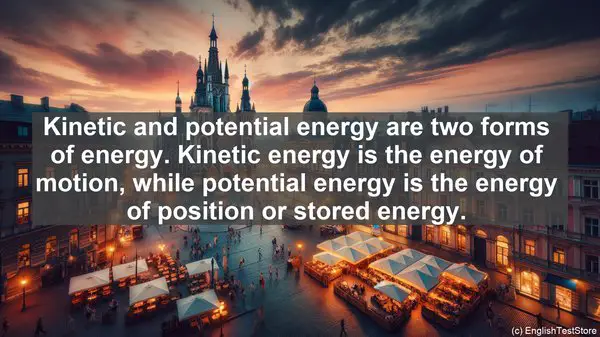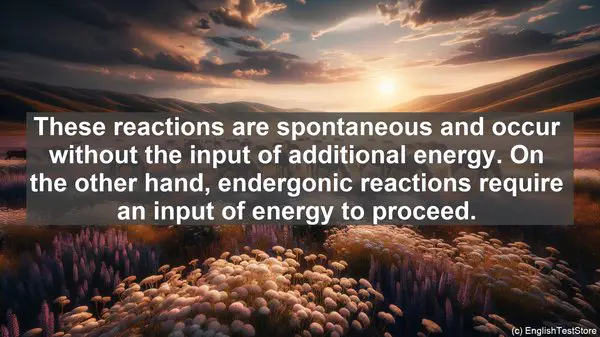Introduction: The Importance of Clear Communication in Science
Welcome to our channel. As students of science, we often come across complex terms and concepts. And in the field of bioenergetics, this is no exception. However, it’s essential to have a clear understanding of these words to avoid any miscommunication or misinterpretation. In today’s lesson, we’ll be focusing on the top 10 words that are frequently confused in bioenergetics. So, let’s dive in!
1. ATP vs. ADP: The Energy Currency of Cells
When it comes to cellular energy, ATP and ADP are two terms that are often used interchangeably. However, they have distinct roles. ATP, or adenosine triphosphate, is the energy currency of cells. It’s like a fully charged battery, ready to power various cellular processes. On the other hand, ADP, or adenosine diphosphate, is the ‘partially charged’ version of ATP. It’s formed when ATP loses one of its phosphate groups. This conversion between ATP and ADP is a crucial part of energy transfer in cells.
2. Aerobic vs. Anaerobic: Different Pathways of Energy Production
Aerobic and anaerobic are terms that describe the presence or absence of oxygen in energy production. Aerobic processes require oxygen and are more efficient, yielding a higher amount of ATP. These processes occur in the mitochondria and are the preferred mode of energy production in most organisms. On the other hand, anaerobic processes occur in the absence of oxygen. While they can provide a quick burst of energy, they’re less efficient and often result in the production of lactic acid or ethanol.
3. Photosynthesis vs. Cellular Respiration: Two Sides of the Energy Coin
Photosynthesis and cellular respiration are interconnected processes that occur in plants and some microorganisms. Photosynthesis is the process by which light energy is converted into chemical energy, in the form of glucose. This process occurs in the chloroplasts and is responsible for oxygen production. On the other hand, cellular respiration is the process by which cells break down glucose to release energy. It occurs in the mitochondria and is accompanied by the consumption of oxygen and the production of carbon dioxide.
4. Oxidation vs. Reduction: The Transfer of Electrons
Oxidation and reduction are terms used to describe the transfer of electrons in a chemical reaction. Oxidation refers to the loss of electrons, while reduction refers to the gain of electrons. An easy way to remember this is through the acronym ‘OIL RIG’ – Oxidation Is Loss, Reduction Is Gain. These processes are fundamental in bioenergetics, as they’re involved in the transfer of energy during reactions.
5. Enzyme vs. Catalyst: Agents of Chemical Reactions
Enzymes and catalysts are substances that speed up chemical reactions. While all enzymes are catalysts, not all catalysts are enzymes. Enzymes are biological catalysts, typically proteins, that are highly specific in their action. They often require specific conditions, such as optimal pH and temperature, to function. Catalysts, on the other hand, can be either biological or non-biological substances that facilitate reactions by lowering the activation energy.
6. Anabolism vs. Catabolism: Building and Breaking
Anabolism and catabolism are two opposing metabolic processes. Anabolism refers to the building of complex molecules from simpler ones. This process requires energy and is often associated with growth and repair. Catabolism, on the other hand, is the breakdown of complex molecules into simpler ones, often accompanied by the release of energy. Together, these processes maintain the balance of molecules and energy in an organism.
7. Kinetic vs. Potential Energy: The Energy of Motion and Position
Kinetic and potential energy are two forms of energy. Kinetic energy is the energy of motion, while potential energy is the energy of position or stored energy. In bioenergetics, these concepts are crucial in understanding the energy transformations that occur in living systems. For example, the potential energy stored in food molecules is converted into kinetic energy when muscles contract.
8. Exergonic vs. Endergonic: Energy Release and Absorption
Exergonic and endergonic are terms used to describe energy-releasing and energy-absorbing reactions, respectively. Exergonic reactions release energy, often in the form of ATP. These reactions are spontaneous and occur without the input of additional energy. On the other hand, endergonic reactions require an input of energy to proceed. This energy is often in the form of ATP or other high-energy molecules.

9. Glycolysis vs. Krebs Cycle: Steps in Glucose Metabolism
Glycolysis and the Krebs cycle are two steps in the metabolism of glucose. Glycolysis, which occurs in the cytoplasm, is the initial breakdown of glucose into pyruvate. This process is anaerobic and doesn’t require oxygen. The Krebs cycle, also known as the citric acid cycle, occurs in the mitochondria and is an aerobic process. It further breaks down pyruvate, releasing energy in the form of ATP and high-energy electrons.
10. Prokaryotes vs. Eukaryotes: Cellular Organization
Prokaryotes and eukaryotes are two types of cells with distinct differences in their organization. Prokaryotes, such as bacteria, lack a true nucleus and membrane-bound organelles. Eukaryotes, on the other hand, have a nucleus and various organelles, including mitochondria and chloroplasts. These differences in cellular organization also impact the bioenergetic processes that occur in these cells.

